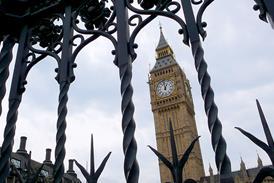Health secretary Andrew Lansley has this evening begun the process of placing an NHS trust in administration for the first time, which would effectively declare it bankrupt.
He has begun the legal process of applying the failure regime to an NHS trust – the first time the power has been used.
This would see all board directors suspended and a “trust special administrator” sent in.
Once the administrator has made their report on South London Healthcare Trust, the health secretary can consult on dissolving the organisation and transferring staff to other bodies, or closing services.
The process could see a decision made and presented to Parliament in October.
The three-site acute trust recorded a £65m deficit in 2011-12 on a turnover of £438m, and HSJ has discovered the trust’s initial plan for 2012-13 was for a deficit at least as big again.
NHS London commissioned a “simulation” exercise into what could be done with the trust earlier this year.
Chris Streather, chief executive of the trust since it was formed from three separate organisations in 2009, announced his departure two weeks ago.
This is the first time a health secretary has begun the process of using the failure regime powers in the 2006 Health Act.
The letter to Dr Streather from Mr Lansley said he recognised that not all of the trust‘s problems were of its own making.
Mr Lansley added: “Nonetheless, there must be a point when these problems, however they have arisen, are tackled. I believe we are almost at this point.
“I have sought to provide NHS organisations with the help and support they need to provide high-quality, sustainable services to their patients, which South London Healthcare Trust stands to benefit from.
“However, even after this support has been provided, your organisation still expects to be in need of significant financial resources from other parts of the NHS and I cannot permit this to continue. That is why I am considering using these powers.
“I appreciate that any decision to use these powers will be unsettling for staff, but I want to stress that the powers are being considered now so that patients in south east London have hospital services that have a sustainable future.”
A DH source said the move would be a “difficult and controversial process”, but should signal to other trusts “that they cannot continue to provide poor services or rely on bailouts from other parts of the NHS”.
The news comes after NHS London chief executive last week revealed to HSJ that she had wanted a more radical solution to the problems in south-east London when the trust was formed in 2009.
Dame Ruth Carnall said managers could be placed under “very, very intensive political pressure” around reconfigurations and in the creation of South London Healthcare Trust there had been a “compromise”.
She added that the result of a simulation exercise NHS London had run in March had shown that a south-east London-wide solution was needed to the trust’s problems.
A senior source in London told HSJ: “Planning blight over the separation of elective and non-elective services hasn’t been helpful over the last two years.”
Another told HSJ that the trust special administrator regime could allow managers to present more radical options than had previously been countenanced and the process would be more open.
The downgrading of one of the trust’s sites, Queen Mary’s Hospital, Sidcup, had seen an improvement in performance, they added, but this had not been enough to turn the trust around.
HSJ understands the Department of Health’s director of provider delivery Matthew Kershaw is among those being considered for the trust special administrator role if the failure regime is invoked.
The failure regime process
After consulting the trust, strategic health authority and commissioners - which Andrew Lansley has done tonight - he can make an order appointing the trust special administrator.
This has to be laid before Parliament before it breaks up for the summer. The administrator will take up their post within five days of the order.
Within 45 working days the administrator must produce and publish a report for the minister to lay before Parliament.
There is then a month-long consultation before the final report is presented to the minister and Parliament.
Within 20 days of that the minister must make a decision and publish it.
























51 Readers' comments